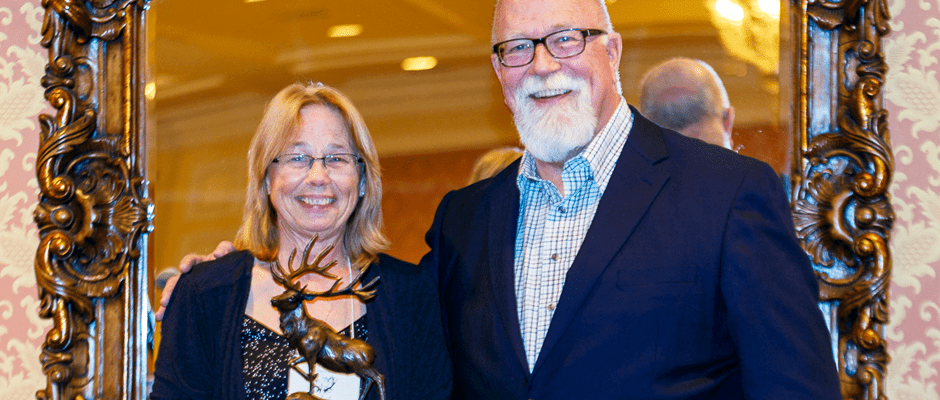Share this article
RMEF honors TWS member Evelyn Merrill
TWS member Evelyn Merrill, a longtime wildlife biologist and former editor-in-chief of the Journal of Wildlife Management, received the Rocky Mountain Elk Foundation’s Excellence in Elk Country-Wildlife Researcher/Biologist award, honoring her three decades of research and teaching.
Merrill received the award at the 12th Western States and Provinces Deer and Elk Workshop in Sun Valley, Idaho.
“It really was a great honor,” Merrill said. “I’ve been working with the Rocky Mountain Elk Foundation for a long time. They really recognize the on-the-ground research and applied research for managing elk, and other species at the same time. It means a lot to me to get that recognition.”
Merrill is the first recipient of the new award.
“We wanted to recognize folks that in large part are totally unrecognized by the rest of the world and bring it to the forefront,” said Tom Toman, director of science and planning for the Rocky Mountain Elk Foundation. “Evie is just a standout in her field.”
The 1980 eruption of Mount St. Helens was still recent news when Evelyn Merrill was a graduate student at the University of Washington. In 1985, she embarked on a study of the northwest portion eruption area to understand why the elk were moving back so quickly.
“Here was this huge blast zone and the elk were flocking in there,” Merill said.
She applied for a $1,000 grant from the Rocky Mountain Elk Foundation — not a lot of money by today’s standards, but for the foundation, which had just been established one year earlier, it seemed like a big investment.
“It was a big chunk of money then, and it was a bigger chunk of money for us as a fledgling conservation organization,” Toman said.
It was Merrill’s first research project with the Rocky Mountain Elk Foundation, but not her last. Throughout her career, Merrill, a professor at the University of Alberta, has authored or co-authored more than 70 peer-reviewed journal publications and took part in RMEF research projects in Washington, Idaho and Canada.
She served as editor-in-chief of the Journal of Wildlife Management from 2013 to 2015.
In recent years, she has returned to the blast site with graduate students to find that in some areas, the ash remains meters deep, while in other areas, the vegetation has returned, leaving little hint of the eruption that prompted her elk research more than three decades ago.
“It was so interesting to see the long-term changes,” she said.
Header Image: Evelyn Merrill stands with Tom Toman, director of science and planning for the Rocky Mountain Elk Foundation, after receiving the organization’s first Excellence in Elk Country-Wildlife Researcher/Biologist award. Courtesy of the Rocky Mountain Elk Foundation.








